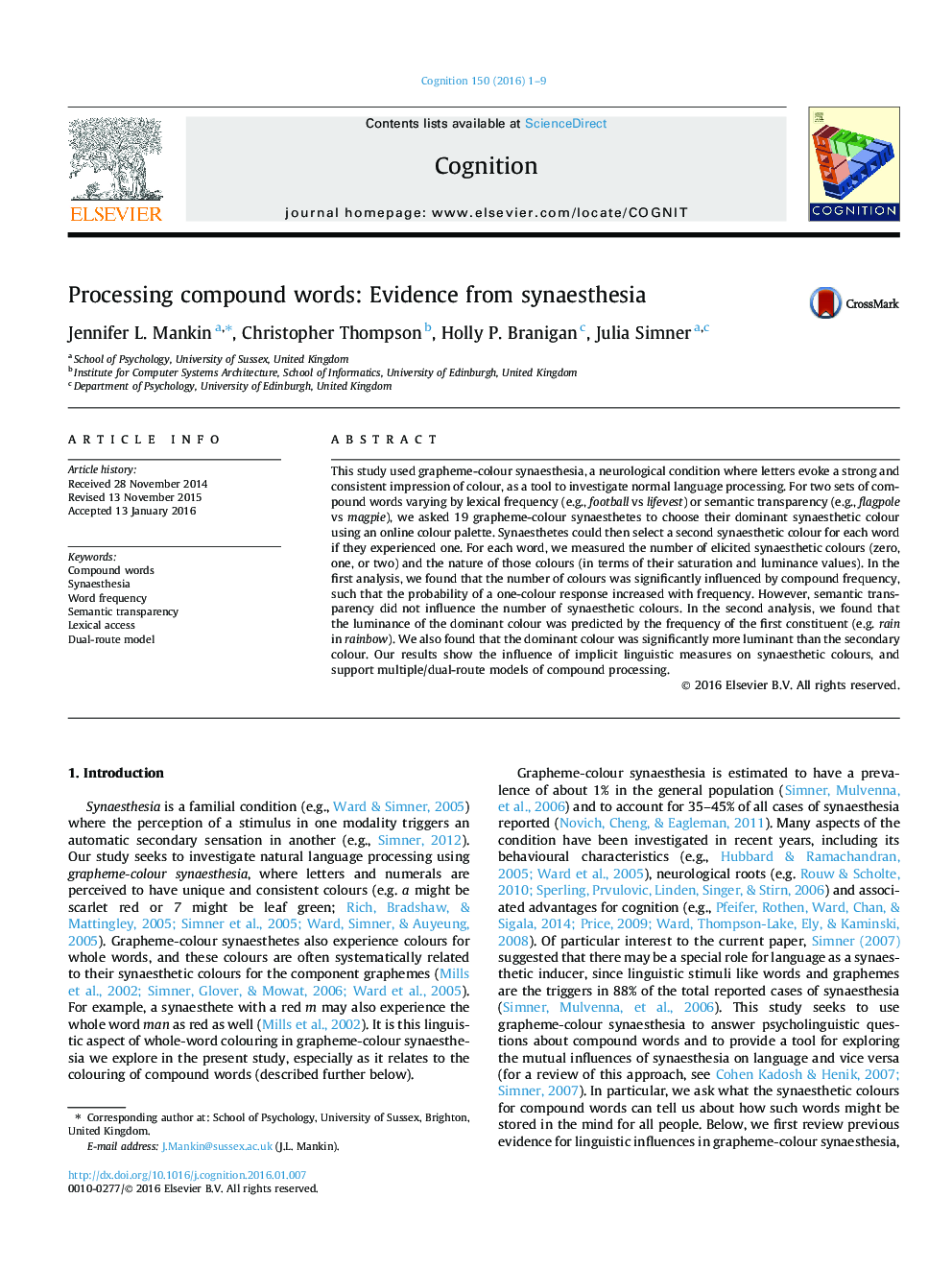| Article ID | Journal | Published Year | Pages | File Type |
|---|---|---|---|---|
| 7286202 | Cognition | 2016 | 9 Pages |
Abstract
This study used grapheme-colour synaesthesia, a neurological condition where letters evoke a strong and consistent impression of colour, as a tool to investigate normal language processing. For two sets of compound words varying by lexical frequency (e.g., football vs lifevest) or semantic transparency (e.g., flagpole vs magpie), we asked 19 grapheme-colour synaesthetes to choose their dominant synaesthetic colour using an online colour palette. Synaesthetes could then select a second synaesthetic colour for each word if they experienced one. For each word, we measured the number of elicited synaesthetic colours (zero, one, or two) and the nature of those colours (in terms of their saturation and luminance values). In the first analysis, we found that the number of colours was significantly influenced by compound frequency, such that the probability of a one-colour response increased with frequency. However, semantic transparency did not influence the number of synaesthetic colours. In the second analysis, we found that the luminance of the dominant colour was predicted by the frequency of the first constituent (e.g. rain in rainbow). We also found that the dominant colour was significantly more luminant than the secondary colour. Our results show the influence of implicit linguistic measures on synaesthetic colours, and support multiple/dual-route models of compound processing.
Keywords
Related Topics
Life Sciences
Neuroscience
Cognitive Neuroscience
Authors
Jennifer L. Mankin, Christopher Thompson, Holly P. Branigan, Julia Simner,
